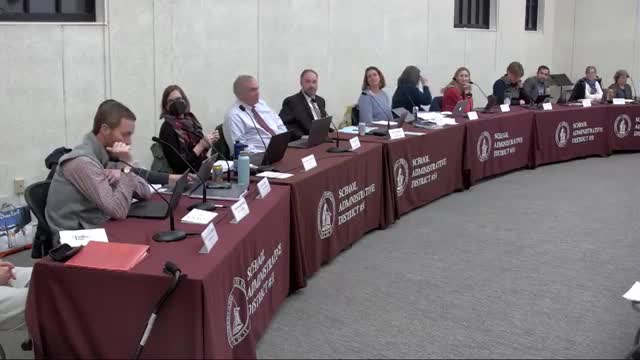School expansion plans may require offline classrooms for an academic year
February 06, 2024 | RSU 51/MSAD 51, School Districts, Maine

This article was created by AI summarizing key points discussed. AI makes mistakes, so for full details and context, please refer to the video of the full meeting. Please report any errors so we can fix them. Report an error »

In a recent meeting of the MSAD 51 School Board, discussions centered around the potential expansion of school facilities, particularly focusing on classroom availability and physical education space. As board members gathered, the atmosphere was charged with anticipation about the future of the district's educational infrastructure.
One key topic was the timeline for taking first-floor classrooms offline during the expansion. A board member raised concerns about how long these classrooms would be unavailable. Drawing from experiences in Auburn, it was noted that a similar project took five years to complete, but the actual construction for adding two classrooms took less than a full academic year. To be cautious, the board is preparing for the possibility that the six classrooms might be offline for an entire school year, pending updated enrollment projections that will clarify the urgency of the need for additional space.
The conversation then shifted to the physical education facilities and cafeteria design. The proposed physical education space is set to be approximately 3,000 square feet, which aligns with standards for the age group and school size. In contrast, the cafeteria will be 1,500 square feet, half the size of the existing Mabel Wilson cafeteria, as younger students typically eat in their classrooms. This design aims to accommodate four lunch periods for about 100 students each, ensuring a smooth flow during meal times.
As the meeting concluded, the board members reflected on the importance of these developments for the district's future. The decisions made now will shape the educational environment for years to come, highlighting the ongoing commitment to providing quality facilities for students. The anticipation of updated enrollment data looms large, as it will guide the next steps in this significant expansion project.
One key topic was the timeline for taking first-floor classrooms offline during the expansion. A board member raised concerns about how long these classrooms would be unavailable. Drawing from experiences in Auburn, it was noted that a similar project took five years to complete, but the actual construction for adding two classrooms took less than a full academic year. To be cautious, the board is preparing for the possibility that the six classrooms might be offline for an entire school year, pending updated enrollment projections that will clarify the urgency of the need for additional space.
The conversation then shifted to the physical education facilities and cafeteria design. The proposed physical education space is set to be approximately 3,000 square feet, which aligns with standards for the age group and school size. In contrast, the cafeteria will be 1,500 square feet, half the size of the existing Mabel Wilson cafeteria, as younger students typically eat in their classrooms. This design aims to accommodate four lunch periods for about 100 students each, ensuring a smooth flow during meal times.
As the meeting concluded, the board members reflected on the importance of these developments for the district's future. The decisions made now will shape the educational environment for years to come, highlighting the ongoing commitment to providing quality facilities for students. The anticipation of updated enrollment data looms large, as it will guide the next steps in this significant expansion project.
View full meeting
This article is based on a recent meeting—watch the full video and explore the complete transcript for deeper insights into the discussion.
View full meeting
